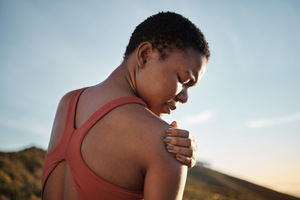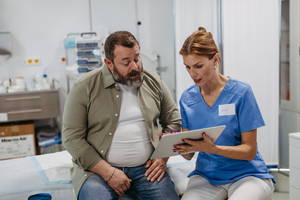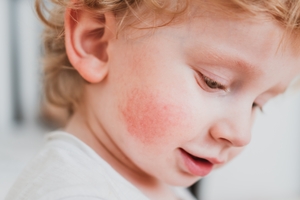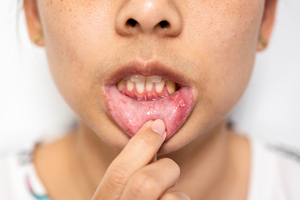Key points
- Wasp stings can cause pain, skin irritation, and in some cases severe allergic reactions.
- First aid for wasp stings includes staying calm, washing the sting site, applying a cold compress, and keeping the area clean and dry.
- Home remedies for wasp stings include hydrocortisone cream, over-the-counter pain relievers, antihistamines, and vinegar.
- Seek medical attention for persistent pain, continuous swelling, or symptoms of a severe allergic reaction.
- The article also provides prevention tips, including wearing light-colored clothing, avoiding perfumed products, maintaining cleanliness in work areas, and carrying an epinephrine auto-injector for those with a history of severe allergic reactions.
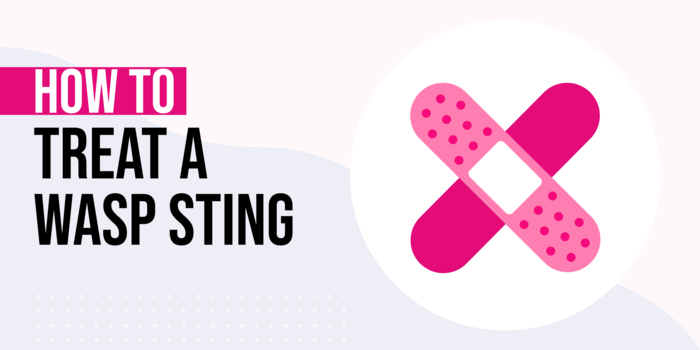
Wasps are pesky flying insects that look similar to bees and can become an uninvited guest to any outdoor activity. If it feels threatened, wasps can sting and quickly put a damper on your day. Like bee stings, wasp stings can cause pain and skin irritation—in some cases, they can even lead to a severe allergic reaction. Knowing how to properly care for a wasp sting can help ease the pain quickly and prevent complications.
Wasp Sting vs. Bee Sting
Wasp and bee stings can cause similar symptoms—but the treatment measures are slightly different, according to Healthline. They note that while a bee can only sting once because its stinger becomes stuck in the skin of its victim, a wasp can sting more than once during an attack. This is because wasp stingers remain intact even after stinging.
First Aid for Wasp Stings
If you've been stung by a wasp, here are the steps that Healthline recommends you should take right away to help reduce your pain and promote healing:
1. Stay Calm Get Away From the Wasps
The first thing you should do after getting stung by a wasp is stay calm and move away from the wasps. If you're near a nest, try to move away as quickly and quietly as possible to avoid disturbing any more wasps.
2. Wash the Sting Site
Once you're safely away from the wasps, Healthline recommends that you wash the sting site with soap and water—this will help remove any venom that is near the surface.
3. Use a Cold Compress
To reduce pain and swelling, Healthline recommends applying a cold compress to the sting site. You can use a bag of ice, a cold pack, or a wet towel to make a compress.
4. Keep the Sting Site Clean Dry
As you heal, Healthline notes that you should keep the site of your sting clean and dry to prevent infection.
Home Remedies for Healing a Wasp Sting
A wasp sting causes some pain, swelling, and redness around the sting site in most people, according to Healthline. While most people recover from a wasp sting without any complications, it's important to take care of the wound to prevent infection and reduce discomfort. Here are some home remedies that can help you heal:
1. Use Hydrocortisone Cream or Calamine Lotion
Hydrocortisone cream or Calamine lotion can help reduce itching, and redness, according to WebMD. They suggest that you apply a small amount of the cream or lotion to the sting site, and repeat as often as the package directions recommend.
2. Take Over-the-Counter Pain Relievers
Over-the-counter pain relievers such as ibuprofen or acetaminophen can help reduce pain and inflammation caused by a wasp sting, according to WebMD. They suggest following the instructions on the label and taking only the recommended dose.
3. Take an Antihistamine
Antihistamines can help relieve itching and swelling caused by a wasp sting, according to WebMD. Benadryl is a common brand name antihistamine that you may be familiar with.
4. Try Using Vinegar on It
Vinegar can help neutralize the alkalinity of wasp stings, according to Healthline—this may help to reduce pain and swelling. The opposite is true for a bee sting, which is acidic, they note. If you want to try vinegar, they recommend that you soak a cotton ball in vinegar and apply it to the sting site using slight pressure for several minutes.
When to see a Doctor for Wasp Sting
Wasp stings can be painful but usually for no more than a day, according to WebMD. They note that if you are experiencing persistent pain and continuous swelling for a couple of days, you may have an infection. This is one reason why you should see a doctor for a wasp sting. Another reason is if you have an allergic reaction.
Symptoms of a Severe Allergic Reaction to Wasp Sting
According to Healthline, if you experience any of the following symptoms, you should seek emergency medical attention right away:
- Severe swelling of the face, lips, or throat
- Hives or itching in areas of the body not affected by the sting
- Breathing difficulties, such as wheezing or gasping
- Dizziness
- Lightheadedness
- Loss of consciousness
- Nausea or vomiting
- Diarrhea
- Stomach cramps
- Weak or racing pulse
How to Prevent Wasp Stings
Wasps, along with bees and hornets, are found in every state across the USA, according to the CDC. So no matter where you are, they recommend that you consider the following steps to help prevent wasp stings when you’re outdoors:
- Wear light-colored clothing
- Avoid perfumed soaps, shampoos, cologne, perfume, and deodorants (as well as bananas and banana-scented toiletries)
- Wear clean clothing and bathe daily
- Wear clothing to cover as much of the body as possible
- Avoid flowering plants when possible
- Keep work areas clean (wasps thrive in places where humans discard food)
- Remain calm and still if a single stinging insect is flying around (swatting at it may cause it to sting)
- If you are attacked by several stinging insects at once, run to get away from them—going indoors if possible
- If a stinging insect is inside your vehicle, stop the car slowly, and open all the windows
Additionally, the CDC notes that people with a history of severe allergic reactions to insect bites or stings should consider carrying an epinephrine auto-injector (EpiPen) and should wear a medical identification bracelet or necklace stating their allergy
Summary
Wasp stings can cause pain and localized swelling (similar to a bee sting), however, the treatment for wasp stings is slightly different since there is no stinger that you need to remove. First aid for wasp stings includes:
- Staying calm getting away from the wasps
- Washing the sting site with soap and water to remove excess venom
- Using a cold compress for pain and swelling
- Keeping the sting site clean dry as you heal
Additionally, you can try the following home remedies to speed your healing and reduce symptoms:
- Hydrocortisone Cream or Calamine Lotion for itching, redness, and swelling
- An OTC antihistamine like Benadryl
- OTC pain relief like acetaminophen
- Dabbing vinegar on the sting site
FAQs
What is the immediate first aid for a wasp sting?
The immediate first aid includes staying calm, moving away from the wasps, washing the sting site with soap and water, and applying a cold compress.
How are wasp stings different from bee stings?
The main difference is that wasps can sting multiple times, unlike bees.
What home remedies can help with healing a wasp sting?
Home remedies include using hydrocortisone cream or calamine lotion, taking over-the-counter pain relievers and antihistamines, and applying vinegar to the sting site.
When should I seek medical attention after a wasp sting?
You should seek medical attention if there is persistent pain and swelling or signs of a severe allergic reaction.
What are some tips to prevent wasp stings?
Tips include wearing light-colored clothing, avoiding perfumed products, keeping work areas clean, and carrying an epinephrine auto-injector if you have a history of severe allergic reactions.
How can I prevent infection after a wasp sting?
Keeping the sting site clean and dry is crucial to prevent infection.
What should I do if I have a history of severe allergic reactions to wasp stings?
If you have a history of severe allergic reactions, it's recommended to carry an epinephrine auto-injector.
Can wasps sting more than once?
Yes, unlike bees, wasps can sting multiple times.

